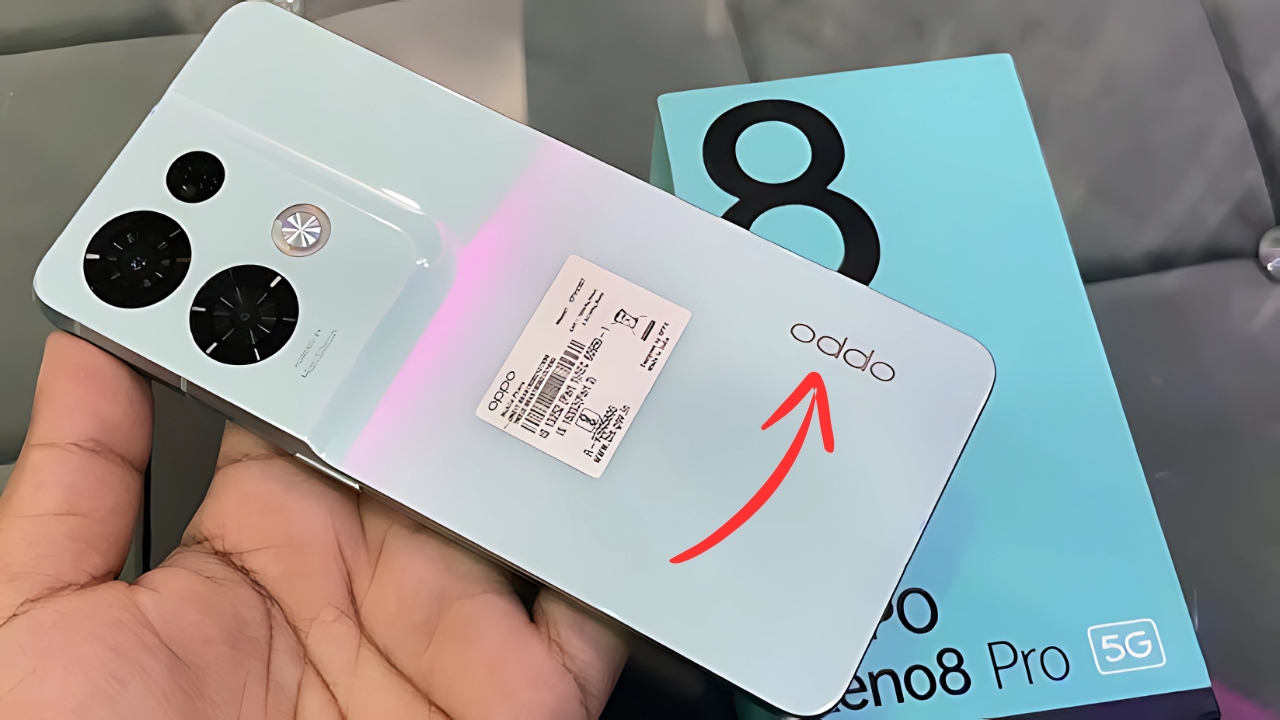Oppo Reno 8 Pro 5G: In the constantly evolving smartphone landscape, finding the sweet spot between premium features and reasonable pricing has become increasingly challenging.
The Oppo Reno 8 Pro 5G emerges as a compelling contender in this quest, offering a thoughtfully crafted package that challenges conventional boundaries between mid-range and flagship categories.
After spending several weeks with this device as my daily driver, I’ve developed a nuanced understanding of its strengths and limitations within the context of today’s competitive market.
Oppo Reno 8 Pro 5G: Design Language: Purposeful Elegance
The moment you extract the Reno 8 Pro from its packaging, the design intent becomes abundantly clear. Oppo has embraced a unified approach where the camera module doesn’t merely sit atop the rear panel but rather emerges organically from it in one continuous piece of glass.
This “unibody” design philosophy eliminates the jarring camera bump found on many competitors, instead creating a gentle slope that feels natural when held.
The Glazed Green finish of my review unit exhibited remarkable depth, shifting between subtle blue and green hues depending on lighting conditions.
At 7.34mm thick and weighing 183 grams, the device strikes a pleasing balance between substantiality and comfort during extended use.
The aluminum frame features flat edges – a current design trend – but with slight chamfering that prevents the sharp feeling that plagues some competitors adopting this aesthetic.
The distribution of weight feels considered rather than coincidental, creating a balanced in-hand experience regardless of how you hold it.
Perhaps most impressive is the front glass implementation, where the display appears to cascade over the edges without the distortion or accidental touch issues of more extreme “waterfall” designs.
This creates a borderless impression while maintaining usability – a thoughtful compromise that prioritizes function alongside form.
Display Experience: Beyond Specifications
The 6.7-inch AMOLED panel delivers the vibrant colors and deep blacks expected from this technology, but specifications alone fail to capture the full experience.
The 120Hz refresh rate implements adaptive switching more intelligently than many devices at this price point, seamlessly adjusting between various rates rather than simply toggling between 60Hz and 120Hz.
This nuance contributes to both smoother perceived performance and improved battery efficiency.
HDR10+ certification proves meaningful rather than merely checkbox-worthy, with supported content exhibiting impressive dynamic range.
The 950 nits of peak brightness ensures outdoor visibility even under direct sunlight, while the 2412 × 1080 resolution strikes an appropriate balance between sharpness and power consumption.
Text rendering appears crisp without the battery penalty of QHD+ displays.
What specifications don’t convey is the factory calibration quality, which proves exceptional for this category.
The “Natural” color mode delivers remarkable accuracy for those who prefer fidelity over saturation, while “Vivid” enhances colors without venturing into the cartoonish territory some competitors occupy.
The in-display fingerprint sensor deserves particular mention, offering flagship-grade speed and reliability rarely found at this price point.
Performance Dynamics: Balanced Capabilities
Powered by MediaTek’s Dimensity 8100-Max processor, the Reno 8 Pro occupies an interesting position in the current silicon hierarchy.
This 5nm chipset delivers performance that comfortably handles everything from daily productivity to demanding games without exhibiting the thermal limitations that sometimes plague flagship processors in slimmer chassis designs.
The gaming experience reveals thoughtful optimization beyond raw horsepower. “Genshin Impact” – often considered a benchmark for mobile gaming performance – maintains a stable 60fps at medium settings without uncomfortable heat buildup or precipitous battery drain.
More graphically modest titles can take full advantage of the 120Hz display capability, with consistent frame rates that enhance competitive gameplay.
Day-to-day performance benefits from the pairing of 12GB RAM with 256GB of UFS 3.1 storage. App retention proves exceptional, with applications remaining in memory far longer than expected, while storage speeds ensure rapid data access without bottlenecking the capable processor.
The haptic motor deserves specific acknowledgment, providing precise tactile feedback that enhances the perception of system responsiveness – a subtle but meaningful contributor to the premium feel.
Camera System: Computational Photography Focus
The camera array combines a 50MP Sony IMX766 primary sensor with an 8MP ultrawide and 2MP macro, but hardware tells only part of the story.
Oppo’s collaboration with MariSilicon X, their dedicated imaging NPU, elevates computational photography capabilities beyond what the sensors alone might suggest.
In favorable lighting, the main camera captures detailed images with an appealing natural color science that avoids the over-processed look found in some competitors.
Dynamic range impresses, preserving both highlight and shadow detail in challenging scenes without producing the artificial HDR aesthetic that has become increasingly common.
The ultrawide, while not matching the main sensor’s capabilities, maintains reasonable consistency in color profile – an area where even premium devices sometimes falter.
Low-light photography reveals the computational advantages most clearly. Night mode produces remarkably detailed images without excessive smoothing, while maintaining more accurate color reproduction than many competitors that tend toward excessive warming in artificial lighting.
Video capabilities include stable 4K recording at 30fps, with effective electronic image stabilization that produces usable footage even during movement.
Portrait mode deserves specific mention for its natural bokeh simulation and impressive subject separation, even with challenging elements like hair or glasses.
Rather than attempting to blur everything behind the subject equally – a common approach that produces artificial-looking results – the system creates more natural depth falloff that mimics optical characteristics of actual lenses.
Battery Experience: Endurance and Resurrection
The 4500mAh battery might appear modest by current standards, but optimization matters more than raw capacity.
In real-world usage, the device consistently delivers full-day endurance even with heavy use, suggesting effective power management throughout the system.
More moderate usage easily extends into a second day, providing confidence for times when charging opportunities may be limited.
The included 80W SuperVOOC charger transforms the charging experience from necessity to mere momentary pause. A full charge requires approximately 34 minutes, while even a brief 10-minute connection provides several hours of typical use.
This rapid charging capability fundamentally changes usage patterns, eliminating the need for overnight charging and reducing battery anxiety during busy days.
Notably absent is wireless charging – perhaps the most obvious feature compromise compared to premium flagships.
While convenient, its omission feels like a reasonable trade-off given the exceptional wired charging speed and the device’s overall value proposition.
Software Experience: Maturing Approach
ColorOS 12.1 based on Android 12 represents a significant maturation of Oppo’s software approach. The interface offers extensive personalization without overwhelming complexity, while animations appear fluid without seeming gratuitous.
The settings menu organization demonstrates logical consideration, making specific options easier to locate than in some competing interfaces.
Bloatwar has been minimized compared to previous generations, with most pre-installed applications serving clear utility purposes.
The remaining third-party applications can be uninstalled rather than merely disabled – a consumer-friendly approach that respects user preferences and device storage.
Oppo’s commitment to three years of OS updates and four years of security patches addresses the longevity concerns that previously plagued many Android devices in this category.
This extended support window enhances the value proposition considerably, ensuring the device remains viable through a typical ownership cycle.
Oppo Reno 8 Pro 5G: Considered Excellence
The Oppo Reno 8 Pro 5G ultimately succeeds not through class-leading specifications in any single area, but through thoughtful integration of components that work harmoniously together.
It represents a philosophy that prioritizes the holistic user experience over marketing-friendly extremes in isolated aspects.
For consumers seeking a premium experience without flagship pricing, the Reno 8 Pro offers a compelling proposition that focuses on features that genuinely impact daily use rather than specification-sheet victories.
The cohesive design, excellent display, capable camera system, and remarkable charging technology create an experience that feels consistently premium across all aspects of smartphone interaction.
In challenging the increasingly blurry distinction between mid-range and flagship categories, Oppo has created a device that forces a reconsideration of what constitutes necessary compromise at this price point.
The Reno 8 Pro demonstrates that thoughtful engineering and focused priorities can deliver an experience that satisfies even discerning users without requiring them to extend to true flagship pricing tiers.










